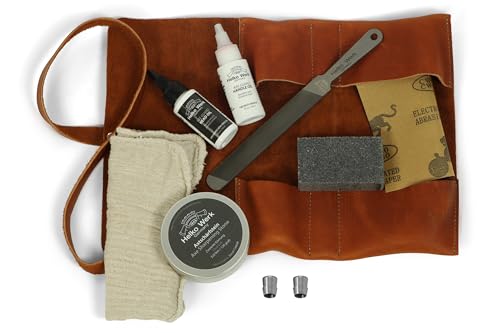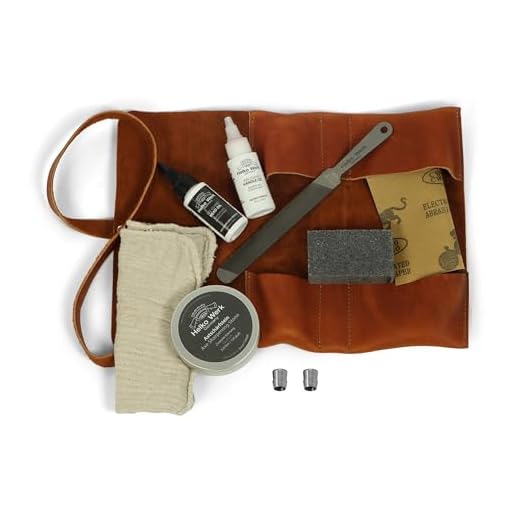




Over time, axe heads can develop rust, which not only affects their appearance but also their functionality. Rust weakens the metal and can make chopping wood or other tasks more difficult. However, with the right tools and techniques, you can easily remove rust from an axe head and restore its original condition. In this guide, we will provide step-by-step instructions on how to effectively remove rust from your axe head.
Step 1: Safety First
Before you begin removing rust from your axe head, it is important to take safety precautions. Wear protective gloves and safety glasses to prevent any injuries. Additionally, work in a well-ventilated area to avoid inhaling any harmful chemicals or fumes.
Step 2: Cleaning
Start by cleaning the axe head using warm soapy water and a scrub brush. This will help remove any dirt or debris from the surface. Rinse the axe head thoroughly and pat it dry with a clean towel.
Step 3: Removing Rust
There are several methods you can use to remove rust from an axe head. One common method is to use a wire brush or steel wool to scrub away the rust. Scrub in circular motions until the rust is completely removed. If the rust is stubborn, you can also try using a rust dissolver or a mixture of baking soda and water.
Step 4: Preventing Future Rust
Once you have removed the rust, it is important to take steps to prevent future rust from forming. Apply a thin layer of oil or rust inhibitor to the axe head, making sure to cover all exposed metal surfaces. This will help protect the metal from moisture and prevent rust from forming.
By following these steps, you can effectively remove rust from your axe head and ensure its longevity. Remember to always practice caution and use the appropriate safety gear. With regular maintenance and care, your axe will remain in top condition for years to come.
The importance of removing rust from an axe head
Rust is a common problem that can affect the performance and longevity of an axe head. Whether you use an axe for woodworking, camping, or any other purpose, it is important to regularly maintain and remove rust from the metal surface to ensure its optimal functionality.
1. Preserving the quality
Removing rust from an axe head is crucial to preserve its quality and extend its lifespan. Rust can weaken the metal, causing it to become brittle over time. This can lead to chips or cracks in the head, making it dangerous and potentially unusable. By regularly removing rust, you can prevent these issues and maintain the overall quality of your axe.
2. Ensuring efficiency
Rust can also hinder the efficiency of an axe. The presence of rust creates friction between the axe head and the wood, making it harder to swing and reducing its cutting power. By removing rust, you can restore the smoothness of the axe surface, allowing it to glide effortlessly through the wood and perform its intended function efficiently.
3. Preventing further damage
If left untreated, rust can spread and cause further damage to the axe head. As rust continues to develop, it can lead to pitting and corrosion, which will make it even more challenging to remove and restore the axe. Regularly removing rust and preventing its recurrence will help to protect your axe from irreversible damage.
- Ensure safety: A rust-free axe head is less likely to have unexpected issues during use, reducing the risk of accidents and injuries.
- Maintain aesthetics: Removing rust will help to maintain the appearance of your axe head, keeping it clean and visually appealing.
- Prolong blade sharpness: Rust can dull the blade of an axe, making it less effective. Removing rust will help to maintain the sharpness of the blade for smooth and precise cuts.
In conclusion, removing rust from an axe head is vital for preserving its quality, ensuring efficiency, and preventing further damage. By regularly maintaining your axe and keeping it rust-free, you can enjoy its optimal performance and prolong its lifespan.
Step-by-step guide to remove rust from an axe head
Rust can accumulate on axe heads over time, affecting their performance and aesthetic appeal. Fortunately, removing rust from an axe head is a relatively simple process that can be done using a few common household items.
What you’ll need:
- Steel wool or a wire brush
- White vinegar
- A container large enough to submerge the axe head
- A towel or cloth
- Mineral oil or any type of rust-preventive lubricant
Step 1: Preparation
Before you begin, make sure you have a clean working area with good ventilation. Rust removal can produce strong odours, so it’s important to work in a well-ventilated space.
Step 2: Remove loose rust
Using steel wool or a wire brush, gently scrub the axe head to remove any loose rust. Be careful not to apply too much pressure, as this could damage the metal surface. Shake off any loose rust particles.
Step 3: Create a vinegar soak
Fill a container with enough white vinegar to fully submerge the axe head. Place the axe head in the vinegar and let it soak for at least a couple of hours. The acidity of the vinegar will help dissolve the rust.
Step 4: Scrub and rinse
After soaking, take the axe head out of the vinegar and scrub it again with steel wool or a wire brush. Pay close attention to any stubborn rust spots. Rinse the axe head under running water to remove any remaining vinegar and rust debris.
Step 5: Dry and lubricate
Thoroughly dry the axe head with a towel or cloth to prevent any further rusting. Once dry, apply a thin coat of mineral oil or rust-preventive lubricant to the surface of the axe head. This will help protect it from future rusting.
Following these steps will help you effectively remove rust from an axe head and restore its functionality. Remember to always take proper safety precautions, such as wearing gloves and eye protection, when working with potentially hazardous materials.
Tips for preventing rust on an axe head
Rust can be a major problem for axe heads, as it can affect both their appearance and performance. However, by taking a few simple preventative steps, you can keep your axe head in good condition and minimize the risk of rust. Here are some tips to help you prevent rust on your axe head:
| 1. Keep it dry | After using your axe, wipe it dry with a clean cloth to remove any moisture. Moisture is one of the main causes of rust, so make sure to keep your axe head as dry as possible. |
| 2. Apply a protective coating | Applying a protective coating to your axe head can help prevent rust. You can use oils or waxes specifically designed for metal to create a barrier between the axe head and moisture. Make sure to apply the coating evenly and according to the manufacturer’s instructions. |
| 3. Store it properly | When you’re not using your axe, store it in a dry place away from moisture. Consider hanging it on a wall or placing it in a well-ventilated area to help prevent the accumulation of moisture. |
| 4. Use it regularly | The more often you use your axe, the less likely it is to rust. Regular usage helps to keep the metal surface clean and prevent the formation of rust. If you don’t plan on using your axe for an extended period, consider giving it a light oiling to provide extra protection. |
| 5. Clean it after use | After using your axe, make sure to clean it thoroughly to remove any dirt or debris that may be trapped. Use a brush or cloth to scrub away any remaining residue, then dry it off completely to prevent the accumulation of moisture. |
By following these tips, you can help keep your axe head rust-free and in optimal condition for use. Remember, prevention is always better than trying to remove rust once it has formed!
Importance of Proper Axe Maintenance
Proper maintenance of your axe is crucial to ensure its longevity and effectiveness. Here are some reasons why maintaining your axe is important:
- Prevents rust: Regular maintenance helps remove any rust that may have formed on the axe head, preventing further corrosion and damage.
- Improves cutting performance: A well-maintained axe retains its sharpness, ensuring efficient and effective cutting. Regular sharpening and honing are essential for optimal performance.
- Ensures safety: A rusty or dull axe increases the risk of accidents and injuries. By maintaining your axe properly, you reduce the chances of the blade slipping or breaking during use.
- Preserves the handle: The handle is an important part of the axe, and proper maintenance helps prevent it from drying out, cracking, or splintering.
- Extends the lifespan: Regular maintenance and care help extend the lifespan of your axe, allowing you to enjoy its functionality for many years to come.
Remember, taking the time to properly maintain your axe will not only improve its performance, but also ensure your safety while using it. So, make sure to clean, lubricate, and sharpen your axe regularly to keep it in optimal condition.






